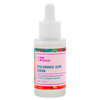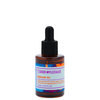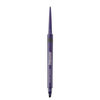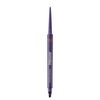
If you’re blaming today’s breakout on last night’s snack binge, you could be onto something. There’s a handful of foods out there that are major acne triggers and they’re hiding in your kitchen (and at the convenience store candy counter).
But don’t purge your fridge just yet—esthetician and nutritionist Cassandra Lanning explains that “bio individuality” is a key component in acne triggers. “Everybody is going to have different triggers of food, stress, etc. that can cause a breakout.” This means that anything from genetics to blood type to metabolism can affect our skin adversely when it comes to what we eat.
But still, there are foods out there that can increase oil production, hormone imbalances, and inflammation—all which can lead to pimples no matter what your body is like.
Below are some of the most common acne triggering ingredients. If you notice your skin condition worsening, maybe these sneaky edibles are getting the best of you.
Dairy
The hormone factor alone makes milk products a major factor where acne is concerned—even growth hormone-free milk is still naturally full of hormones. But there’s more. “From a nutrition standpoint, low fat and no-fat milk is nothing but a sugar bomb” says Lanning, going on to explain that removing the fat content from milk leaves nothing behind but the sugar—a whopping 12 grams per cup. The fats are there to help break down milk’s fat soluble vitamins A and D for better absorption. Without the fat content, these vitamins may not be properly absorbed and you’re left with a sugary cocktail that could leave your skin in hormonal disarray.
Sugar
Acne is, essentially, an inflammation, and one of the biggest inflammation triggers is refined sugar. When sugar enters our body it causes our insulin levels to spike, which results in inflammation of our system. For the acne prone, that means a fresh crop of pustulars. What’s more, combine sugar with hormonal milk and you’re brewing up trouble. “If a patient tells me chocolate is causing them to break out, it almost never fails that it’s milk chocolate of which the key ingredients are milk and sugar. There’s your two triggers right there”, Lanning explains. Can’t give up your chocolate addiction? Choose the darker varieties. ”If you are indulging in 70, 80, or 90% dark chocolate, which is low in sugar and higher in antioxidants, it’s gonna be less likely to trigger breakouts.” Bottom line is pick your poison, but make sure to choose wisely.
Peanuts
This favorite legume is a secret zit trigger that we never saw coming. “We ask acne-prone people to avoid peanuts and peanut products because they contain a type of hormone called an androgen that can irritate follicles on your skin by increasing sebum production, which then exacerbates breakouts.” Lanning told us. This means that PBJ (or that yummy deep fried egg roll) could have you on the fast track to oil city! Look for peanut oil in potato chips too which can be commonly blamed for surprise breakouts. Lanning cites “intelligent label reading” as the first step to a clearer face.
Iodine
Not just for wounds, iodine is lurking in most all of our favorite foods. Iodized salt is a staple on most dinner tables, but the trigger also comes in high doses in seaweed. Sushi lovers take heed. Algae is another iodine vessel, and if you’re a fan of green smoothies or superfood supplements, the admittedly beneficial green is definitely a part of your diet. “Algae is typically a very hydrating ingredient, and it can also offer antioxidant benefits, along with sun protection. However, it can also exacerbate acne breakouts, so it depends on what type of algae it is and how it’s derived, and those are things we are still learning about” Lanning says of the sea growth. ”We want to not give an algae product to a person with an acne problem because there is the potential for it to break them out.” However iodine is even present in veggies such as asparagus. Studies show that small amounts of iodine-rich foods (3-4 servings a week) are less likely to aggravate acne, but going overboard could trigger pimples in certain people.
Finally, contrary to popular belief, it takes 60 to 90 days for acne to form—that’s up to three months to brew a crop of pimples! If you think the foods you’ve been eating are triggering your breakouts, try laying off one ingredient at a time for a month and see if you notice a difference. Skipping that Snickers bar tonight may not ward off tomorrow’s breakout but stick with it and you may notice a clear-up down the road.
Cassandra Lanning can be found at Integrity Skin Care in Bothell, Washington. For more skin facts, follow her on her Twitter and Facebook.
You Might Also Like
-

Expert Skin Care Advice
Are you Allergic?
- 35
-
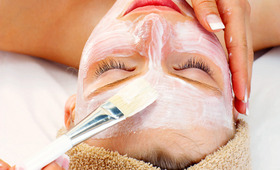
Expert Skin Care Advice
Are You Wasting Your Money on Skin Care?
- 53
-

Expert Skin Care Advice
Winterize Your Beauty Routine
- 102
-
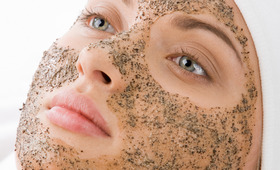
Skincare
How Often Should You Scrub Your Face?
- 247
-

Expert Skin Care Advice
What Does Nano Skin Care Really Mean?
- 19
-

Expert Skin Care Advice
Skin-Saving Tips That Can Change Your Complexion
- 1711
-

Shampoo
Beat Psoriasis Like Kim Kardashian!
- 69
-

Expert Skin Care Advice
Skin Care Labeling Secrets
- 83






